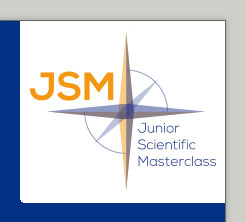Onderzoeksproject aanpassen
Projecten zijn uitsluitend aan te passen door bij het project behorende onderzoekers.
Geef via het uitrolmenu aan welke onderzoeker u bent. Nadat op u de button 'Edit project' heeft geklikt, wordt automatisch een e-mail verstuurd naar het e-mailadres van de onderzoeker die u heeft gespecificeerd.
In deze e-mail staat een link waarmee u het project kunt wijzigen.
Project properties
| Title | Molecular imaging of estrogen receptor expression levels as a tool for improved decision-making in breast cancer treatment |
|---|---|
| Keywords | breast cancer hormone receptors endocrine therapy PET imaging |
| Researchers |
dr. E.F.J. de Vries Prof. dr. G.A.P. Hospers drs. M. van Kruchten |
| Type of project | Stage Wetenschap / Researchproject |
| Nature of the research | This project involves translational research. Findings from in-vitro experiments will be further evaluated in animal models. This should lead to improved stratification of breast cancer patients by PET imaging |
| Fields of study | oncology nuclear medicine |
| Background / introduction |
|---|
|
Anti-hormonal therapy is the treatment of choice for the majority of breast cancer patients, because of its efficacy and relatively few adverse effects. After an initial response, however, patients will eventually become resistant. The estrogen receptor (ER) plays a vital role in anti-hormonal therapy. Therapy resistance is usually related to changes in the ER signaling pathway. Three types of resistant tumors can be discriminated: resistance in which ER expression is 1) lost, 2) preserved, or 3) increased. Changes in ER expression are not only caused by resistance to anti-hormonal therapy, but could also be induced by drugs that block other signaling pathways and epigenetic drugs regulating gene transcription. We have shown that epigenetic drugs can induce ER-expression in ER-negative cells and that ER-expression can be down-regulated in ER-positive cells. Further evaluation on gene transcription levels and the influence of interacting hormones is needed to understand the exact biological mechanisms as well as the influence of ER-modulation on therapy resistance. In vitro data suggests that modulation of the ER-expression can be used as a target to overcome resistance to anti-hormonal therapy. Different treatment strategies could be required for tumors with different ER expression levels. Unfortunately, knowledge of ER expression in resistant tumors is not taken into account in treatment decision-making at this moment. In general, patients are not rebiopsied, because of the invasive nature of this procedure. Therefore, up-to-date information on the resistance phenotype of the tumor is usually not available. In contrast to biopsy, molecular imaging techniques like positron emission tomography (PET) allow non-invasive monitoring of tumor characteristics, such as the ER expression. The radiolabeled estrogen derivate 16beta-[18F]fluoroestradiol (FES), which is a validated tracer for monitoring ER expression with PET, is available at the UMCG and a clinical trial with this PET tracer has started in 2010. The availability of the PET tracer for ER expression, a dedicated PET camera for studies in small animals and a PET/CT for patient studies offers the unique opportunity for in-vivo studies on the role of ER in treatment strategies, drug efficacy and therapy resistance. |
| Research question / problem definition |
|---|
| The aim of the study will be to investigate the effects of drug intervention on ER expression in-vitro and in-vivo. |
| References |
|---|
|
1. Linden HM, Stekhova SA, Link JM, Gralow JR, Livingston RB, Ellis GK, et al. Quantitative fluoroestradiol positron emission tomography imaging predicts response to endocrine treatment in breast cancer. J Clin Oncol 2006 Jun 20;24(18):2793-9. 2. Peterson LM, Mankoff DA, Lawton T, Yagle K, Schubert EK, Stekhova S, et al. Quantitative Imaging of Estrogen Receptor Expression in Breast Cancer with PET and 18F-Fluoroestradiol. J Nucl Med 2008 Mar;49(3):367-74. 3. Aliaga A, Rousseau JA, Ouellette R, Cadorette J, van Lier JE, Lecomte R, et al. Breast cancer models to study the expression of estrogen receptors with small animal PET imaging. Nucl Med Biol 2004 Aug;31(6):761-70. 4. Jordan VC. The 38th David A. Karnofsky lecture: the paradoxical actions of estrogen in breast cancer--survival or death? J Clin Oncol 2008 Jun 20;26(18):3073-82. 5. Walton TJ, Li G, Seth R, McArdle SE, Bishop MC, Rees RC. DNA demethylation and histone deacetylation inhibition co-operate to re-express estrogen receptor beta and induce apoptosis in prostate cancer cell-lines. Prostate 2008 Feb 1;68(2):210-22. |


